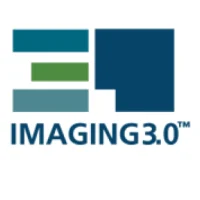What of the evidence for the benefit of radiologists? In the United States the job market is soft, the demand for imaging has gone down, and most medical students are taught about radiology by non-radiologists. The recent trajectory of radiology is a cautionary tale: if you only chase productivity, it will be at your peril. Radiologists need to tell the story of their value, said McGinty, in what can sometimes be a hostile environment. She cited the article by William Mallon, MD, as an example - title “The life cycle of a parasitic specialist: how absentee radiologists can suck the financial blood from an EP’s work.” - although judging by the hundreds of comments that are still being posted, radiologists can mount a robust rebuttal. In addition, medics and the public are waking up to radiation risks, which is an opportunity for radiologists to explain the value of imaging.
Imaging 3.0™
Imaging 3.0™ is an initiative of the American College of Radiology, and is a vision and game plan for providing optimal imaging care. It involves culture change, a portfolio of IT tools and alignment of incentives, with the goal of delivering imaging care that is beneficial and necessary, and none that is not. The thinking behind the initiative is to encourage radiologists to see that change is possible. The ACR website includes, for example, case studies that spotlight radiologists who have successfully used Imaging 3.0 techniques. For example, a radiology practice in Indiana quantified everything they did for the hospital beyond radiology reporting, observing the threat that the hospitals they serve saw them only as image readers, and thus easily replaceable. They quantified almost 10000 hours of non-interpretive activity. Recently their lead radiologist was elected to the management board of the hospital.
Radiologists need to change the national conversation, urged McGinty. Others are taking part - the Radiology Cares ® campaign from the Radiological Society of North America. She commended the series of articles by Prof. Giles Boland in the JACR on the value chain as well as the recent article by Seltzer and Lee in JAMA on the transformation of diagnostic radiology in the accountable care organisation (ACO) era.
McGinty urged radiologists to act now, giving a list of 6 actions to do right now:
- Maximise reimbursement under the current system
- Maximise participation in quality programmes
- Get educated about your wider world
- Educate your community about what you do
- Get involved in system governance
- Find a way to connect differently with your patients.
Concluded McGinty, radiologists need to connect with their patients, be visible to define their value and earn patient trust - as patients are paying more, they are asking about costs, and radiologists need to be able to answer value questions from patients. There should be a radiologist on every committee in the hospital.
Remember the power of the pictures, she said. Be visible, start small, but start!
Claire Pillar
Managing Editor, HealthManagement
Latest Articles
MIR 2014, value, Imaging 3.0
Who could imagine medicine without imaging, said Dr. Geraldine McGinty (pictured), speaking at the Management in Radiology (MIR) Annual Scientific Meeting...










